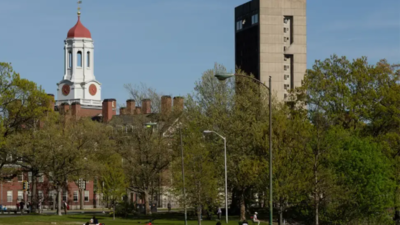ARTICLE AD BOX

The contrasting strategies of Harvard, Columbia, and Brown in Trump's funding battle explained.
Washington’s freeze on billions of dollars in federal research grants has plunged the Ivy League into an unprecedented confrontation with the White House, forcing universities to choose between compliance, compromise, or confrontation.
While Columbia and Brown have finalised their settlements, Harvard remains entangled in negotiations—its decision likely to set the tone for future battles over the balance of financial dependence and academic independence.
Harvard: Negotiating under fire
No institution faces higher stakes in this funding standoff than Harvard. With over $2 billion in research grants frozen, the university is under immense pressure after President Trump publicly declared that Harvard must agree to “nothing less than $500 million” to unlock federal funds.Unlike Columbia, which opted for direct payments, Harvard appears to be resisting a model that would send money back to Washington. Instead, negotiators are exploring an alternative approach—redirecting settlement funds into educational and workforce initiatives. This strategy mirrors Brown’s path and would allow Harvard to maintain more autonomy while demonstrating a public commitment to economic development.
But the delay comes at a cost. Every day without a deal hampers ongoing research, disrupts faculty projects, and jeopardizes grant-dependent labs. The university is also facing political headwinds: congressional hearings on foreign funding disclosures and admissions practices have amplified scrutiny. A court ruling expected on September 3 could tilt the balance either toward a compromise or toward a prolonged legal fight.
Columbia: Paying the price with policy strings
Columbia University took the most direct route to resolution—at a significant financial and governance cost. It agreed to pay $200 million to the US Treasury over three years, along with an additional $21 million to settle Equal Employment Opportunity Commission investigations.This settlement was not just about money. It came bundled with policy concessions on admissions and employment practices, introducing a new layer of federal oversight into areas traditionally guarded as core to institutional autonomy.
In choosing to settle swiftly, Columbia prioritised certainty and continuity of research funding. Yet, the move signals an uncomfortable precedent: that financial compliance can invite broader regulatory control over academic policies.
Brown: A strategic detour through workforce development
Brown University crafted the most unconventional deal of the three, pledging $50 million over ten years to Rhode Island workforce development programs rather than paying federal authorities directly.
By channeling funds into local economic initiatives, Brown sidestepped Washington’s direct control and reframed its settlement as a regional investment rather than a federal penalty.This long-term, phased approach not only preserves Brown’s academic freedom but also strengthens ties with state stakeholders—an increasingly valuable asset in an era where universities face skepticism about their social and economic contributions.
While the financial figure is modest compared to its Ivy peers, the political calculus behind Brown’s move signals a shift toward local partnerships as a buffer against federal leverage.
The new currency of compliance
The structure of these settlements reveals more than fiscal strategy—it exposes the trade-offs between financial stability and institutional independence. Columbia’s choice ensured immediate access to frozen funds but at the cost of new federal scrutiny over its governance.
Brown’s approach avoided such entanglements, preserving internal policy control while meeting external expectations through a community-focused lens.Harvard, still at the negotiating table, faces a dilemma: embrace a workforce-centric model like Brown and absorb political criticism for delay, or agree to terms closer to Columbia’s and risk ceding ground on academic self-governance.
Workforce development as a political lever
One theme unites these divergent strategies: the Trump administration’s push to tether university settlements to vocational and workforce development initiatives.
This reflects a broader policy pivot—reframing federal investment in higher education as a tool for economic competitiveness rather than pure research advancement.For universities, this creates a dual challenge: align with a political narrative that favours practical skills and job readiness while safeguarding their traditional research-driven mission. Brown has leaned into this trend. Harvard seems poised to follow, though whether this shift becomes structural or symbolic remains to be seen.
What’s at stake for higher education
Beyond the Ivy League, the implications of this showdown are profound. If these settlements become the template for resolving funding disputes, federal-university relations could fundamentally change. The notion that government support is an unconditional pillar of research may give way to a new era of transactional accountability, where policy influence comes baked into financial lifelines.For now, all eyes are on Harvard. Its eventual deal—whether a grand bargain or a prolonged standoff—will not just unlock billions in research dollars but will also signal the future of academic freedom in a political climate where federal dollars come with increasingly visible strings attached.



.png)
.png)
.png)
















 8 hours ago
3
8 hours ago
3









 English (US) ·
English (US) ·